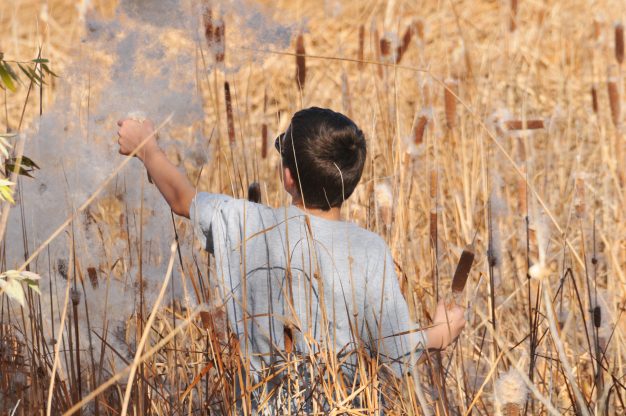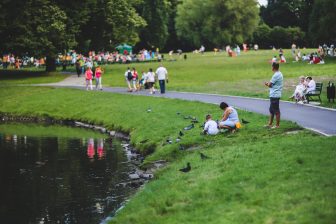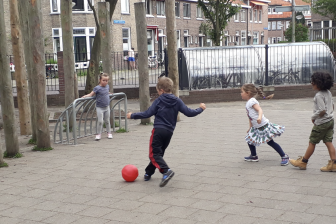
Nature, Health, and the Equity of Urban Parks
An exciting number of studies are demonstrating the important health benefits nature provides for children (Chawla 2015). Two studies published this summer also show these health benefits can last into adulthood (Pensini, Horn and Caltabiano 2016 and Snell et al. 2016). At the same time, emerging research shows that many children and families from lower income communities have less access to parks with high quality amenities, including natural features (Rigolon 2016). It is thus important to think not only about how we are providing opportunities for children to experience nature, but also how readily these experiences are available for children of all income levels and ethnicities.
Benefits of Nature Contact
Louise Chawla recently reviewed the benefits of nature contact for children in the context of urban planning (Chawla 2015). In her review, Chawla discusses the capabilities approach to well-being and adapts Nussbaum’s “10 Central Capabilities” for human dignity, to a framework in which nature helps children reach these goals. Included among these are urban spaces that are adapted for children’s development and facilitate the following:
- Moving freely from place to place
- Using the senses and have pleasurable experiences
- Forming attachments to things outside ourselves
- Showing concern for other human beings
- Showing concern for and relating to animals; and
- Being able to laugh, to play, to enjoy recreational activities.
In her review, Chawla also revisits place-based fieldwork of the 1970s and many of the lessons we are still learning from that time. Included among these is a “more deliberate interweaving of natural and man-made elements” so that children can enjoy nature in urban contexts. Among these elements are creeks, woods, hills, and overgrown “wastelands” of vacant lots and interstitial spaces, because of the creative play these spaces afford. Also from this time came the importance of providing “loose parts” (Nicholson 1971) – water, stone, twigs, grass, and other found objects that are the foundational supports for myriad types of creative play.
Access to these simple natural elements support a diversity of types of play, as well as a number of health benefits, including better motor coordination and balance, increased physical activity, healthier body weight, better concentration and less impulsivity, less depression or psychological distress and greater sense of energy, and more creative and cooperative play (Chawla 2015).
Recent research suggests that connection to nature in childhood is positively correlated with direct nature experience, close to home nature, positive family values for nature, and knowledge about the environment. Pensini and colleagues’ (2016) study further supports that nature exposure in childhood can have lasting health benefits, indirectly, by building a foundation in which children learn to seek out nature exposure as a lifelong health habit.
Equity in Access to Nature
There are equity implications in the above research findings. Because well-designed, higher amenity parks can provide important health benefits, Alessandro Rigolon conducted an analysis of park proximity, park acreage and park quality in relation to socioeconomic and ethnic variation across multiple developed countries. In his findings, there was not much difference between park proximity and socioeconomic status or ethnicity and race. Instead, the most striking findings in his analysis were that ethnic minorities and people with lower socioeconomic status had access to less park acreage overall, fewer acres of parks per person, and lower park quality. He found that under-represented groups are disadvantaged based on every parameter of park quality, and that inequities were observed in cities in the United States, England, Australia, and South Africa. Rigolon also highlights that even if a park is close by, the amenities and resources (including maintenance and crime safety) are often quite different, which will affect visitation and proposed health benefits. Across four continents, parks in neighborhoods with lower socioeconomic status have fewer aesthetic and natural features, in particular. These include trees for shade, or natural enclosure for play settings.
Rigolon suggests that in order to achieve greater health equities, planners should focus on park acreage and quality amenities as well as park proximity. Focus on quality nature amenities in particular, could help provide the context for a capabilities-approach to well-being.
Author: Victoria Derr
Photo Credit: photo by Lynn M. Lickteig
References
Chawla, Louise. 2015. “Benefits of nature contact for children.” Journal of Planning Literature 1-20.
Nicholson, S. 1971. “How not to cheat children: the theory of loose parts.” Landscape Architecture 61: 30-34.
Pensini, P., Horn, E. and Caltabiano, N.J., 2016. An Exploration of the Relationships between Adults’ Childhood and Current Nature Exposure and Their Mental Well-Being. Children, Youth and Environments, 26(1), pp.125-147.
Rigolon, A., 2016. A complex landscape of inequity in access to urban parks: A literature review. Landscape and Urban Planning, 153, pp.160-169.
Snell, T.L., Lam, J.C., Lau, W.W.Y., Lee, I., Maloney, E.M., Mulholland, N., Wilson, L. and Wynne, L.J., 2016. Contact with Nature in Childhood and Adult Depression. Children, Youth and Environments, 26(1), pp.111-124.




